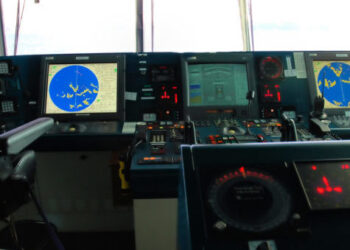![]() Raytheon Anschütz, with sea weather expert Dr. Meeno Schrader of WetterWelt, show joint system’s fuel saving capabilities at SMM2012.
Raytheon Anschütz, with sea weather expert Dr. Meeno Schrader of WetterWelt, show joint system’s fuel saving capabilities at SMM2012.
From a graphical presentation of heading plot and corresponding rudder angles, frequency and amplitudes of rudder angles can easily be identified as key indicators of autopilot efficiency. By using the graphical indication of heading and used rudder angle of the NP 5000 autopilot and the easy structured touch screen display, even untrained user are able to adjust autopilot parameters for a more efficient rudder steering.
However, only to have manual adjustments is not the optimum, as Andreas Lentfer, Raytheon Anschütz BD Director explained: “Modern autopilots can also adapt to current weather and sea states automatically. As a unique feature, Anschütz autopilots offer Precision and Economy modes. If operated in Economy mode, rudder movements are significantly reduced to save fuel, whereas operation in Precision mode provides highest accuracy for safe navigation.”
The demonstration has also covered the relevance of optimized route planning. With only a handful of clicks a route can be calculated using the Synapsis ECDIS. Once a route has been planned and checked, the integrated weather charts indicate forecasted weather conditions of a primary and a secondary route and thus provides insights into voyage efficiency.
“Formerly it was a wide spread thinking, ECDIS weather chart overlays were to increase comfort and safety for passengers and loading only. But with the increasing importance of emission reduction and fuel savings, weather consideration during route planning becomes significant.” Dr. Schrader explained.
































































